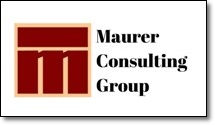‘Designing Strategies’ Newsletter
September – October 2015 Volume 12 — Issue 67
 There have been various versions of the ‘It’s Not Your Father’s (whatever)’ on TV and in magazine and newspaper advertisements over the past few years. Ad Agencies must think we have yet to notice that things have changed and aren’t the same as they were years ago. No surprises there. Of course things have changed. Almost everything has changed to some degree. Today’s customers are very different from those our parents dealt with in the past.
There have been various versions of the ‘It’s Not Your Father’s (whatever)’ on TV and in magazine and newspaper advertisements over the past few years. Ad Agencies must think we have yet to notice that things have changed and aren’t the same as they were years ago. No surprises there. Of course things have changed. Almost everything has changed to some degree. Today’s customers are very different from those our parents dealt with in the past.
Everything has changed. Very few things are like they used to be. Cars, clothing, homes, communication devices and the food we eat every day are not the same as they were when we were much younger and growing into adulthood. Some things get better, others – well, not so much improved. People and their habits change along with all of the changes and improvements in the world around us.
Yes, that means that customers have changed too. We human beings are quite adaptable when things change. today’s customers have different tastes and expectations. They have more – many more- options available from which to choose. In some ways they have become more demanding about everything from manufacturing materials, manufacturing lead times, pricing, and sales processes through warranties and follow up services.
Today’s customers are definitely not at all like our parents’ customers were. Small Business Trends recently offered an article on trends and changes small businesses are experiencing in relationships with their customers. Several of the changing trends they noted:
1. Today’s Customers Have More Options
 Thanks to the Internet, customers have so many more options from which to choose. They can now shop 24/7/365 from dozens and dozens of suppliers. With so many options to choose from, competition has become more vicious. Free shipping, free up-grades, more finishes, discounts and extended warranties can be found easily through the Internet from the comfort of the customer’s home.
Thanks to the Internet, customers have so many more options from which to choose. They can now shop 24/7/365 from dozens and dozens of suppliers. With so many options to choose from, competition has become more vicious. Free shipping, free up-grades, more finishes, discounts and extended warranties can be found easily through the Internet from the comfort of the customer’s home.
A fire in the fireplace, a glass of wine and a laptop with Internet access provides a very comfortable shopping experience for today’s customers. No need today for customers to get dressed, drive to the local shopping center, find a place to park, then expose themselves to being bumped into, jostled or waiting in long check-out lines. In just a few minutes, a customer knows if their item of choice is available, in what sizes and colors, how much it costs and when it will ship. Checkout is a breeze – no lines to stand in, no other customers to battle. And, the choices – products, services, competing websites, costs, customization – nearly limitless.
2. Today’s Customers Want Things NOW
All of the generations supporting today’s economy fall into this ‘NOW’ category. The older, Traditionals generation, were willing to wait for something if it was what they wanted. Starting with Baby Boomers and moving forward, the patience factor is gone. Baby Boomers were raised during the early years of fast food restaurants. Expecting us to wait for anything at all quickly became a thing of the past. We want it ASAP if not immediately. We don’t want to hear that it’s temporarily out of stock or has a two-month lead time. We want to hear that it will ship immediately, or be delivered to us no longer than a day or two later. We want it NOW!
3. The Need for Human Contact Remains
 One human need that has not changed for today’s customers is the need for human contact. According to Abraham Maslow’s Theory of Self-Actualization, once our basic physiological needs as human beings are met: air, water, and food, we begin searching for other human beings. First, we seek family then we seek community. These most basic human needs will likely never change.
One human need that has not changed for today’s customers is the need for human contact. According to Abraham Maslow’s Theory of Self-Actualization, once our basic physiological needs as human beings are met: air, water, and food, we begin searching for other human beings. First, we seek family then we seek community. These most basic human needs will likely never change.
Even when shopping for, or buying something, we still crave that human touch. Customers are likely to have questions they want answered and problems solved by a real, live person. Customer service via the Internet must provide that contact they seek if your firm is to be successful.
What strategies have you developed for working with today’s customer?
How can you prepare to provide today’s customers with more options? What changes or additions to your product and service lines to provide more options to these new customers? How can you modify your company systems and processes to be able to deliver on their ‘NOW’ schedule?
Some online e-Commerce companies have implemented ‘Live Chat’ on their websites to be available for answering questions that just can’t be found on their websites. FAQ pages are helpful, but often potential customers have other questions that you have not thought about. If they can’t get an answer quickly, they will move on to another firm.
Some big brands have developed strategies for using social media as an important piece of their customer service processes. They set up ‘listening’ applications to help pick up on murmurings – both positive and negative – occurring online. The last thing your firm needs is a disgruntled customer spreading their dissatisfaction across Cyberspace.
Today’s customers: find them. Fix their problems. Keep them happy and they will spread great reviews of your company and its excellent customer service. It’s definitely time to get prepared for today’s customers. Ready or not, they are here, buying online in huge numbers. You need to get your small business into the game.
VISUALIZE — ANALYZE — STRATEGIZE
Your Company’s Path to Growth and Success
For a conversation with Terri L Maurer about how we can help your firm get focused on growth and success, call her at 330.666.0802 or just send her an email .
This complimentary publication is brought to you by Terri L Maurer, FASID, owner of Maurer Consulting Group. We encourage you to share this actionable information with colleagues and other small business owners. Maurer Consulting Group is a strategies firm helping clients evaluate and formulate strategies for success. Our mission is to help small business owners put their companies on track, focused on growth and success.






